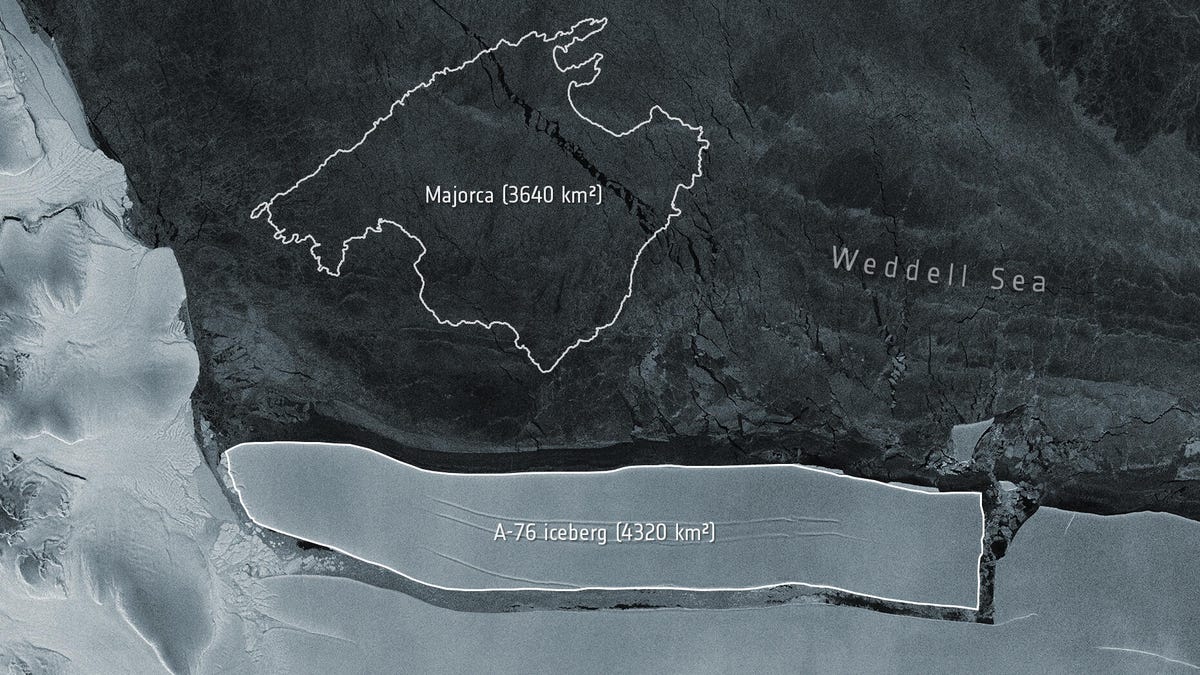World's biggest iceberg just broke off Antarctica's Ronne ice shelf
A-76 is monstrous.

The A-76 iceberg is the world's largest, smashing the previous record holder by over 400 square kilometers.
A humongous chunk of ice, almost 75 times bigger than Manhattan, has calved off Antarctica's Ronne ice shelf, according to the European Space Agency and British Antarctic Survey.
Images taken by the Copernicus Sentinel-1 mission, which is comprised of two satellites in polar orbits, shows the slender berg's detachment from the shelf on May 16. It's total area exceeds the previous record holder, A-23A, by around 440 square kilometers. The US National Ice Center (USNIC) confirmed the iceberg had begun to break off on May 13. Both icebergs are now adrift in the Weddell Sea.
The naming of the iceberg, A-76, refers to the region it first calved from and denotes it as the 76th iceberg to be tracked by the USNIC.
The detachment of the iceberg is a natural process and is not believed to be related to anthropogenic climate change, according to New Scientist.
While the iceberg is huge, it's got nothing on B-15, an iceberg almost as big as Jamaica that calved off of the Ross ice shelf in Antarctica 21 years ago. That too, was part of a natural cycle.
The Copernicus Sentinel-1 mission launched two satellites, the first in April 2014 and the second in April 2016. The satellites capture images of the Earth's surface and have generated around 40 petabytes of data as of Jan. 1. Using radar, the satellites can image the Earth whether it's day or night — handy for viewing icebergs all year long.

